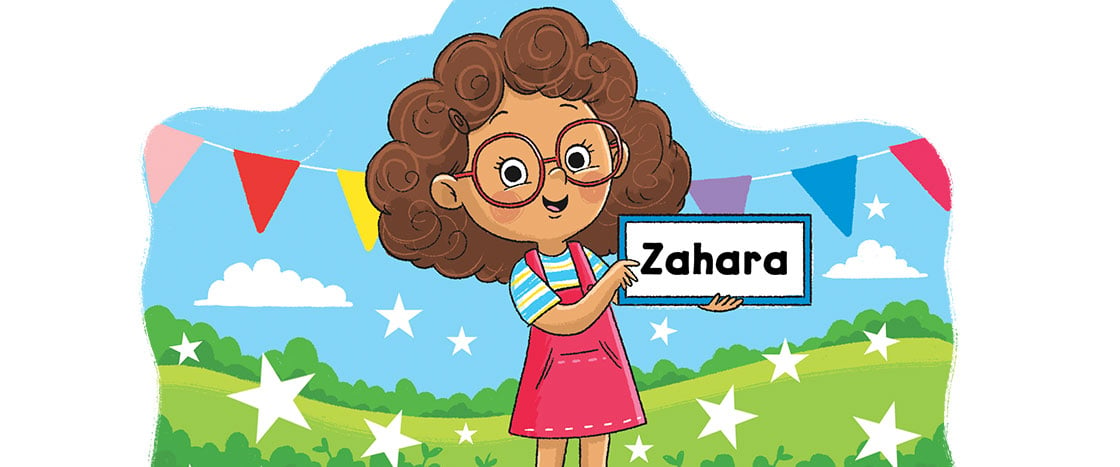I have curly hair. I have red glasses. And I love my name.
It is Zahara. You say it like this: za-HA-ra.
Isn’t that cool?

No one can say her name right, so the kids call her Z. Will she be brave and tell them that she wants to be called Zahara?
I have curly hair. I have red glasses. And I love my name.
It is Zahara. You say it like this: za-HA-ra.
Isn’t that cool?
Then I went to a new school.
No one could say my name.
“My name is Zahara,” I said.
“Hi, Sara,” said one kid.
“My name is Zahara,” I said.
“What?” said another kid.
“My name is Zahara,” I said.
“I’ll call you Z,” said another kid.
They all started to call me Z.
I did not want to be Z. But I was scared to say so.
In class, we got new notebooks.
We had to write our names.
I didn’t write anything.
“What’s wrong, Zahara?” the teacher asked.
“No one can say my name,” I said.
“Well,” he said, “let’s play a name game.”
Then he wrote his full name: Abebe Kassa.
“My first name is Abebe,” he told the class.
“You say it like this: ah-BEE-bee.”
“Sometimes people have trouble saying it.
So I tell them again.” He smiled at me.
“We should call people what they want.
That shows we care.”
I looked at my notebook.
I wrote my name: Zahara.
I liked how it looked.
“Now let’s each say our name,” said Mr. Kassa.
I raised my hand just a little. I felt nervous. But I said it anyway.
“I want to be called Zahara.”
“Let’s all say Zahara’s name,” said Mr. Kassa.
And they did. Za-HA-ra. Zahara!
My name is Zahara. That is what all my new friends call me.
Isn’t that cool?
About the Story
Self-identity
Communicating effectively
Bravery
ESSENTIAL QUESTION
The essential question of this issue is How Can We Be Brave?
Through the above genres, students will discuss:
Read-Aloud
Technology Time
Online Read-Aloud
1. BEFORE READING
Show a Video (10 minutes)
Preview the First Pages and Set a Purpose for Reading (5-10 minutes)
2. READ THE STORY (10-20 MINUTES)
SEL Focus: Self-awareness (20 minutes)
ELA Focus: Story Elements (10 minutes)
SEL Focus: Bravery (20 minutes)
ELA Focus: Retelling (10 minutes)